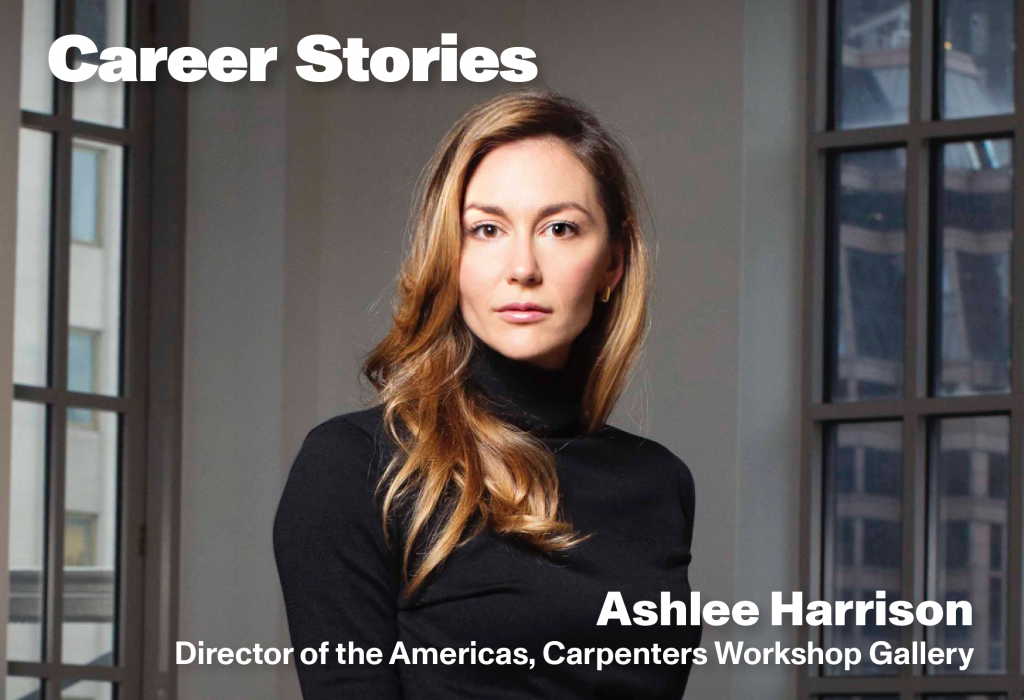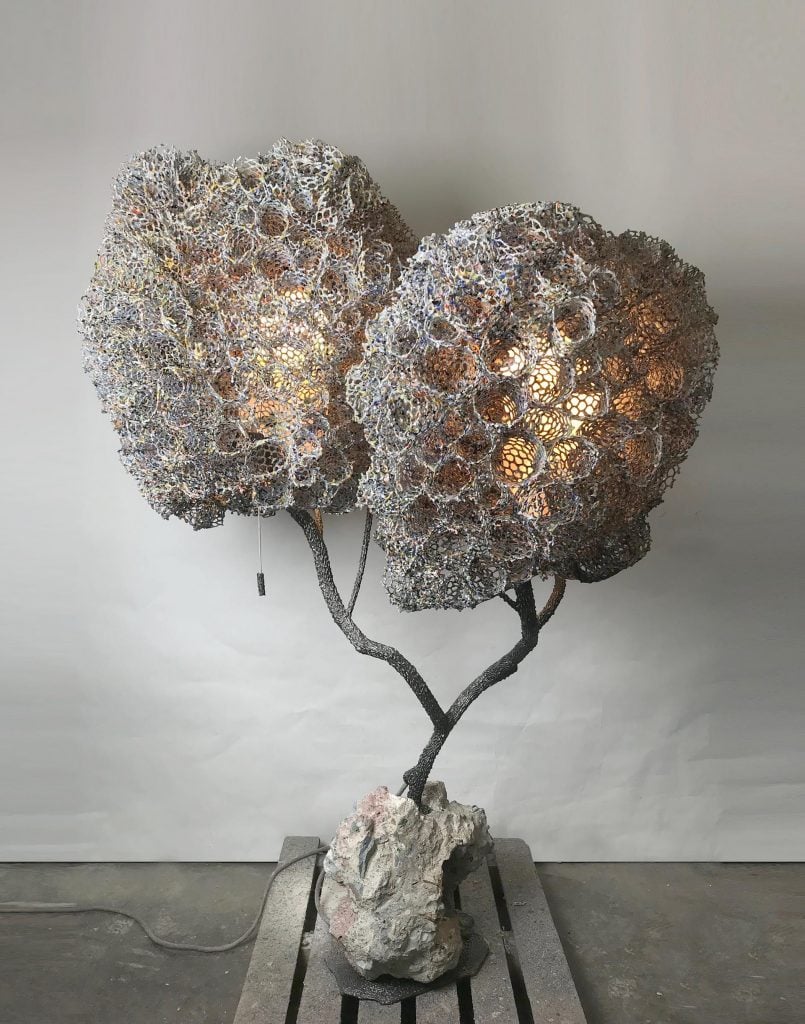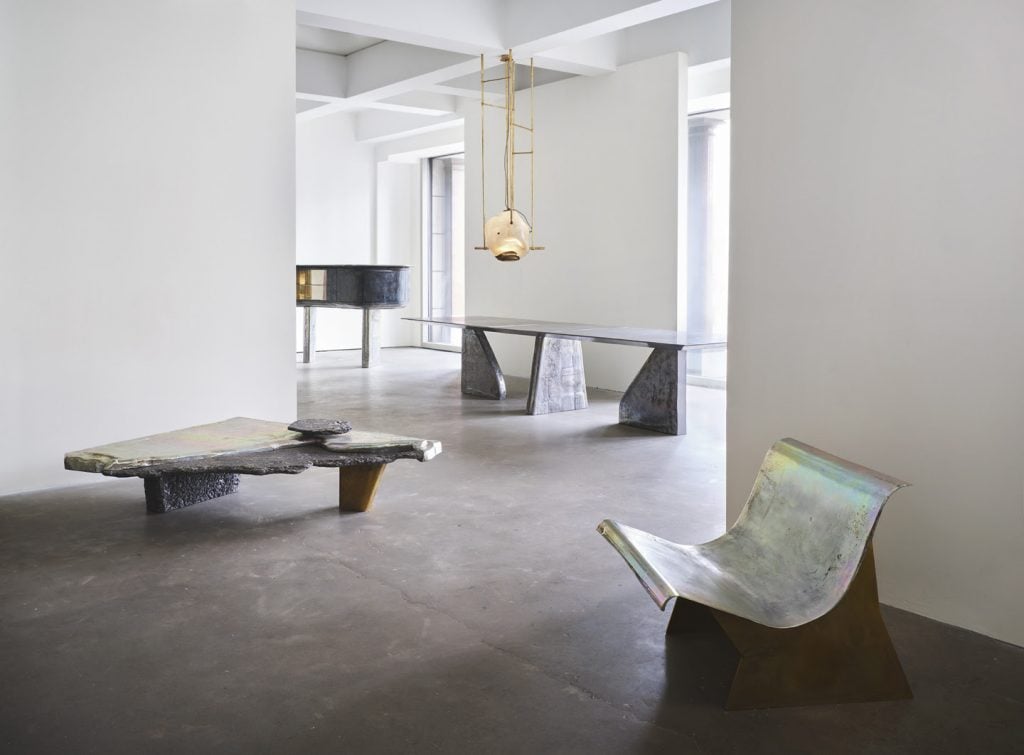Career Stories
Ashlee Harrison of Carpenters Workshop Gallery on How She Got Her Start, and the Evolution of the Design World
Harrison shares how growing up surrounded by design shaped her career path.

Harrison shares how growing up surrounded by design shaped her career path.

Samantha Baldwin

There must be something in the water in New Hope, Pennsylvania. The small town, home to important mid-century designers such as Phillip Powell, George Nakashima, and Paul Evans, can also now claim Ashlee Harrison, director of the Americas at Carpenters Workshop Gallery.
Harrison grew up surrounded by design. Her grandfather, an architect, instilled in her an interest in spatial relationships from a young age. But it was not until she took a history of design course at Drexel University that she envisioned a career in the design world. Since then, Harrison has held positions at the Design Miami fair, and spearheaded the creation of Carpenters Workshop Gallery’s permanent New York outpost, from the ground up.
Read on to learn about Harrison’s favorite projects, upcoming shows, and the pieces that pull her in most.

Balls Tree (155/2019), 2019. Metal Mesh with Paverpol and Pigments, Metal Welded Branch, Concrete Base, Silicone Cable, Light Fittings, Courtesy of Carpenters Workshop Gallery.
At what point did you decide that you wanted a career in the art and design world and why?
At college I studied art history and design and had internships in fashion and at the Philadelphia Museum of Art. It was in a history of design course in college when I really started to appreciate the relationship between art and design, discovering the sculptural approach to designed objects. I knew then that I wanted to make a career out of it.
What was your first job in the design world, and what was your most memorable moment in that job?
After graduating from college, my best friend and I decided to move to Miami together on a whim. We both ended up taking jobs in fashion in Bal Harbour. When the market crashed in 2008, budgets were restructured and I was deciding if I wanted to stay in Miami or go back to New York. Then, I got a call with an opportunity to be the marketing director for the owner of major design centers across the U.S. I was so young and bold at the time, and he ended up taking a chance and hiring me.
After four years, I decided I wanted to return to my art-historical and design roots, and the timing was perfect: Design Miami reached out with a position as director of external relations. It felt like I was making an exciting move but also a big risk at the time. Design Miami was really starting to mature, but I would have to take a pay cut. However, in the moment it was a dream role for me, my heart was really in the art world and I followed my gut and went for it. I worked there developing strategy and identifying audiences who would want to buy design, including museums and art collectors, and of course interior designers and advisors. This is where I met many major dealers including Loïc Le Gaillard and Julien Lombrail, the co-founders of Carpenters Workshop Gallery.
After Design Miami, I wanted to start my own consulting business, and one of my ideas was to set up for European galleries that didn’t have a presence in New York. I was in Paris for FIAC where I ran into Julien, and I started talking to him about doing a Carpenters exhibition in New York. At this point I knew the gallery well and I loved their artists and connected deeply with the program. The idea quickly turned from a single show to a permanent space in New York.
That was more than seven years ago now, and since then we’ve grown it together. I set up the U.S. business from my apartment because we didn’t have a space for the first year and a half. I was finding the space, negotiating the lease, selecting the architect, overseeing construction, and at the same time raising awareness, spearheading business development and sales for the gallery in the U.S. I loved those late nights in the early days, knowing that we were building something from the ground up. I was just turning 28 when they hired me; for them to take a chance and believe in me gave me the confidence I needed to do the job. There was never a doubt in my mind, only possibilities.

“Éternel,” an exhibition of work by Vincenzo de Cotiis is currently on view at Carpenters Workshop Gallery in New York. Courtesy of Carpenters Workshop Gallery.
You had an early career in fashion, working in public relations at Saks Fifth Avenue. How has your background in fashion influenced your position in the design world?
I worked at Saks in Bal Harbour when I first graduated from college. They hired me for an admin role in the fashion office and were also recruiting for a P.R. director; they never hired for the position so I ended up growing into the role. This was pre-2008 when luxury retail had big budgets for fashion events and activations, and I had the opportunity to work on some amazing art and fashion collaborations and build a network of art and design contacts, regionally and globally.
Do you have a favorite project you have ever worked on for the gallery?
Launching in the U.S. market, and that journey, of course, was an incredible experience. And the “Dysfunctional” exhibition at the Ca’D’Oro for the 2019 Venice Biennale. However, more recently, our seasonal gallery space in Aspen with Lehmann Maupin this summer has been a total milestone. I love bringing functional and traditional contemporary art together and showing people how they dialogue, how they are elevated on the same plane. You can’t have one without the other. As well, Carpenters Workshop Gallery is featured in a popup with Christie’s that opened this summer and has been incredible to be a part of. For me, seeing Wendell Castle juxtaposed with Rothko really highlights how the boundaries between art and design are evolving.
Any upcoming shows or projects that you can share?
I am so excited to share that this fall, Carpenters will show an exhibition in New York of stateside young and emerging artists who really represent the future of our industry, and speak to the ethos of what Carpenters represents. I am collaborating with independent curators Wava Carpenter and Anna Carnick of Anava Projects on the initiative. Carpenters has commissioned these artists to create new work and we are mentoring them through the process. It’s been amazing to work so intimately with incredible young talent and the parallels between the artists in our current program, particularly in their use of experimental materials and techniques with a very sculptural approach to functional work. We’re excited to increase diversity in our program and bridge what is happening here in the US with what we are seeing come through Europe.
What do you think the design world will look like in 10 or 20 years?
I think that, finally, design is being celebrated at the same level as other forms of contemporary art and is being recognized in the market, and this market will continue to grow. Contemporary artists are making installations that have a functional aspect, blurring the boundaries between medium and discipline. At the end of the day, creatives are creatives—they create—in whatever medium they use, from video installation, painting, and sculpture to designed objects. These lines will continue to dissolve.
How do you stay motivated? What inspires you?
I love that every day is different. If things were stagnant I wouldn’t be happy. Working with artists is what drives me and inspires me every day.
Do you collect any art or design objects of your own? What pieces do you most gravitate toward?
I only buy art that I love. I have pieces at home by Pedro Friedeberg, Campana Brothers, Wonmin Park, Maarten Baas, Jose Dávila, and Richard Prince, and I recently bought a portrait of Michèle Lamy by Vaginal Davis from a project curated by artist Jonathan Berger at the Aspen Art Museum.
If you could give one piece of advice to your younger self, what would it be?
Follow your intuition. If it feels right, it’s right. If you have reservations, there’s a reason. And channel your energy with intention.